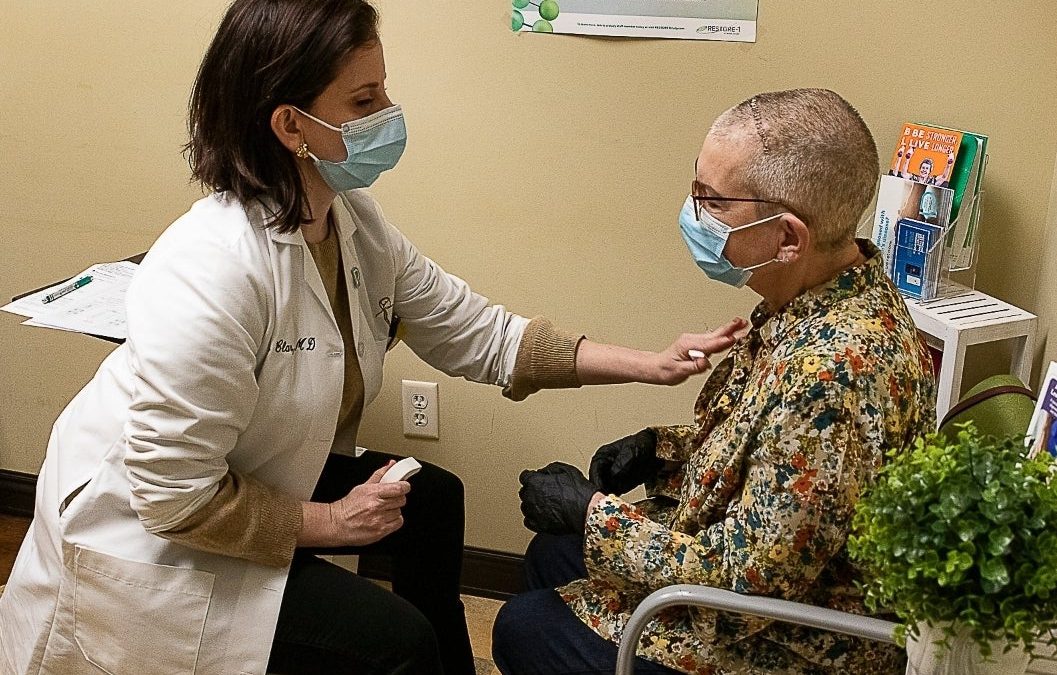Review some of the most commonly asked questions about spinal tumor treatment options:
What is a spinal tumor?
A spinal tumor is a growth of abnormal cells that develops within the bones of the spine, the nerve roots or within the spinal canal. A spinal cord tumor, also known as an intradural tumor, is characterized as a spinal tumor that begins inside the covering of the spinal cord (dura) or within the spinal cord itself. Spinal tumors are classified depending on where they occur relative to the protective membranes of the spinal cord.
Types of spinal tumors include:
- Ependymoma
- Astrocytoma
- Meningioma
- Myxopapillary ependymoma
- Hemangioblastoma
- Schwannoma
- Neurofibroma
- Myeloma
- Osteosarcoma
- Chordoma
Tumors from other parts of the body may spread to the spinal cord, the supporting bones around the spinal cord or to the vertebrae. Spinal tumors can lead to neurological problems, including pain, numbness and sometimes paralysis. A spinal tumor may cause permanent disability and become life-threatening.
What are the symptoms of a spinal tumor?
Spinal tumors can cause different symptoms, especially as the tumors grow. Potential spinal tumor symptoms include:
- Back pain that worsens at night
- Muscle weakness or loss of sensation in your legs and arms
- Pain at the site of the tumor
- Loss of bladder or bowel control
- Difficulty walking
- Radiating back pain
- Mild to severe muscle weakness in different parts of the body
It is important to note that back pain is oftentimes a common early symptom of spinal tumors. Back pain may spread to your hips, legs, arms or feet and worsens over time. Depending on the type of tumor, spinal tumors progress at different rates.
What are the risk factors with a spinal tumor?
Spinal cord tumors are more common for people who have certain conditions, including:
- Neurofibromatosis 2: A hereditary disorder in which benign tumors develop near o the nerves related to hearing. This condition may lead to progressive hearing loss in one or both ears. Some people with this condition also develop spinal canal tumors.
- Von Hippel-Lindau disease: A rare, multisystem disorder in which there are blood vessel tumors in the brain, spinal cord and retina with other tumors in the kidneys or adrenal glands.
In terms of potential complications, spinal tumors may compress spinal nerves, leading to a loss of sensation or movement below the location of the tumor. This loss of sensation may cause changes in bladder and bowel function and permanent nerve damage.
However, if treated aggressively and caught early, it is possible to prevent further loss of function and to regain nerve function. A tumor pressing against the spinal cord itself may be life threatening.
How to diagnose a spinal tumor?
Spinal tumors may be overlooked due to uncommon symptoms that resemble those of more common conditions. Due to this, it is especially important for your doctor to know your complete medical history and perform both neurological and physical exams.
If your doctor suspects a spinal tumor, the following tests may help to confirm the diagnosis and pinpoint the tumor’s exact location:
- Spinal magnetic resonance imaging (MRI): This test uses a powerful magnetic field and radio waves to produce accurate images of the spine, nerves and spinal cord. An MRI is typically the preferred diagnostic test for spinal tumors. A contrast agent may be injected into a vein in your hand to help highlight certain tissues and structures during the test.
- Computerized tomography (CT): This test involves using a narrow beam of radiation to produce a detailed image of the spine. Sometimes, an injected contrast dye is used to make abnormal changes in the spinal cord or in the spinal canal easier to see. A CT scan is rarely used to diagnose spinal tumors.
- Biopsy: This test is the only way to determine the exact type of the spinal tumor. A biopsy involves examining a small tissue sample under a microscope. The specific biopsy results help to determine treatment options.
What are the treatment options available for a spinal tumor?
The goal of spinal tumor treatment is to remove the tumor completely. However, this goal may be complicated by the risk of permanent damage to the spinal cord and the surrounding nerves. Your doctors will take into account your overall health and age.
The type of spinal tumor and whether it arises from the spinal canal or from the structures of the spine or has spread to your spine from elsewhere in the body must be considered when determining a treatment plan. Potential treatment options for most spinal tumors, include the following:
- Monitoring: If small spinal tumors are not growing or pressing on surrounding tissues, your doctor may choose to watch them carefully. During observation, your doctor may recommend periodic CT or MRI scans to monitor the tumor.
- Surgery: This is the treatment of choice for tumors that can be removed with a lower risk of spinal cord or nerve damage. In microsurgery, high-powered microscopes make it easier to distinguish the tumor from healthy tissue. Doctors can also monitor the function of the spinal cord during surgery to minimize the chance of injury. In some instances, high-frequency sound waves may be used during the surgery in order to remove fragments and break up tumors. If a tumor cannot be removed completely, surgery may be followed by chemotherapy or radiation therapy or both. Depending on the procedure, spinal surgery recovery may take weeks or longer.
- Radiation therapy: Radiation therapy may be used to eliminate the remnants of the spinal tumor after surgery in order to treat inoperable tumors or those where surgery is deemed too risky. Your radiation therapy may be adjusted to minimize the amount of healthy tissue that is affected. Modifications may include changing the dosage of the radiation or using 3-D conformal radiation therapy.
- Chemotherapy: Chemotherapy uses medications to stop cancer cells from growing. Your doctor will determine whether chemotherapy alone might be beneficial or in combination with radiation therapy. Side effects may include hair loss, increased risk of infection, vomiting, nausea and fatigue,
Other drugs: Your doctor may prescribe corticosteroids to help reduce the swelling either after surgery or during radiation treatments. It is important to note that corticosteroids are usually used for short periods of time to avoid more serious side effects, such as high blood pressure, diabetes, muscle weakness, osteoporosis and an increased risk of infection.








